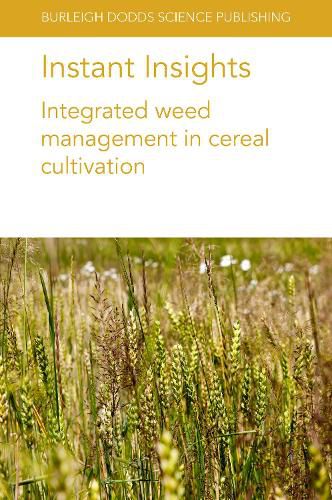Readings Newsletter
Become a Readings Member to make your shopping experience even easier.
Sign in or sign up for free!
You’re not far away from qualifying for FREE standard shipping within Australia
You’ve qualified for FREE standard shipping within Australia
The cart is loading…






This collection features five peer-reviewed literature reviews on integrated weed management in cereal cultivation.
The first chapter examines the problem of weeds in barley and explains the application of integrated weed management (IWM) to barley cultivation. The chapter also outlines weed control tactics and the practical implementation of IWM in barley.
The second chapter reviews the availability of cultural strategies which can be used in wheat cultivation as part of an IWM strategy. The chapter considers the implementation of practices that can improve crop health, including diverse crop rotations.
The third chapter considers the impact of weeds on maize cultivation and productivity, as well as the emergence of IWM as a sustainable method of controlling weeds. The chapter assesses the efficacy of key IWM techniques, such as crop rotations.
The fourth chapter provides a detailed assessment of the biological constraints currently impacting the productivity of rice cultivation, focusing on the issue of weeds. The chapter includes an overview of the IWM approach and its benefits.
The final chapter focuses on competitive cereal crops and cultural strategies for weed management, including the use of weed-suppressive cultivars, post-harvest crop residues, and cover crops for management of the weed seedbank and eventual weed suppression.
$9.00 standard shipping within Australia
FREE standard shipping within Australia for orders over $100.00
Express & International shipping calculated at checkout
This collection features five peer-reviewed literature reviews on integrated weed management in cereal cultivation.
The first chapter examines the problem of weeds in barley and explains the application of integrated weed management (IWM) to barley cultivation. The chapter also outlines weed control tactics and the practical implementation of IWM in barley.
The second chapter reviews the availability of cultural strategies which can be used in wheat cultivation as part of an IWM strategy. The chapter considers the implementation of practices that can improve crop health, including diverse crop rotations.
The third chapter considers the impact of weeds on maize cultivation and productivity, as well as the emergence of IWM as a sustainable method of controlling weeds. The chapter assesses the efficacy of key IWM techniques, such as crop rotations.
The fourth chapter provides a detailed assessment of the biological constraints currently impacting the productivity of rice cultivation, focusing on the issue of weeds. The chapter includes an overview of the IWM approach and its benefits.
The final chapter focuses on competitive cereal crops and cultural strategies for weed management, including the use of weed-suppressive cultivars, post-harvest crop residues, and cover crops for management of the weed seedbank and eventual weed suppression.